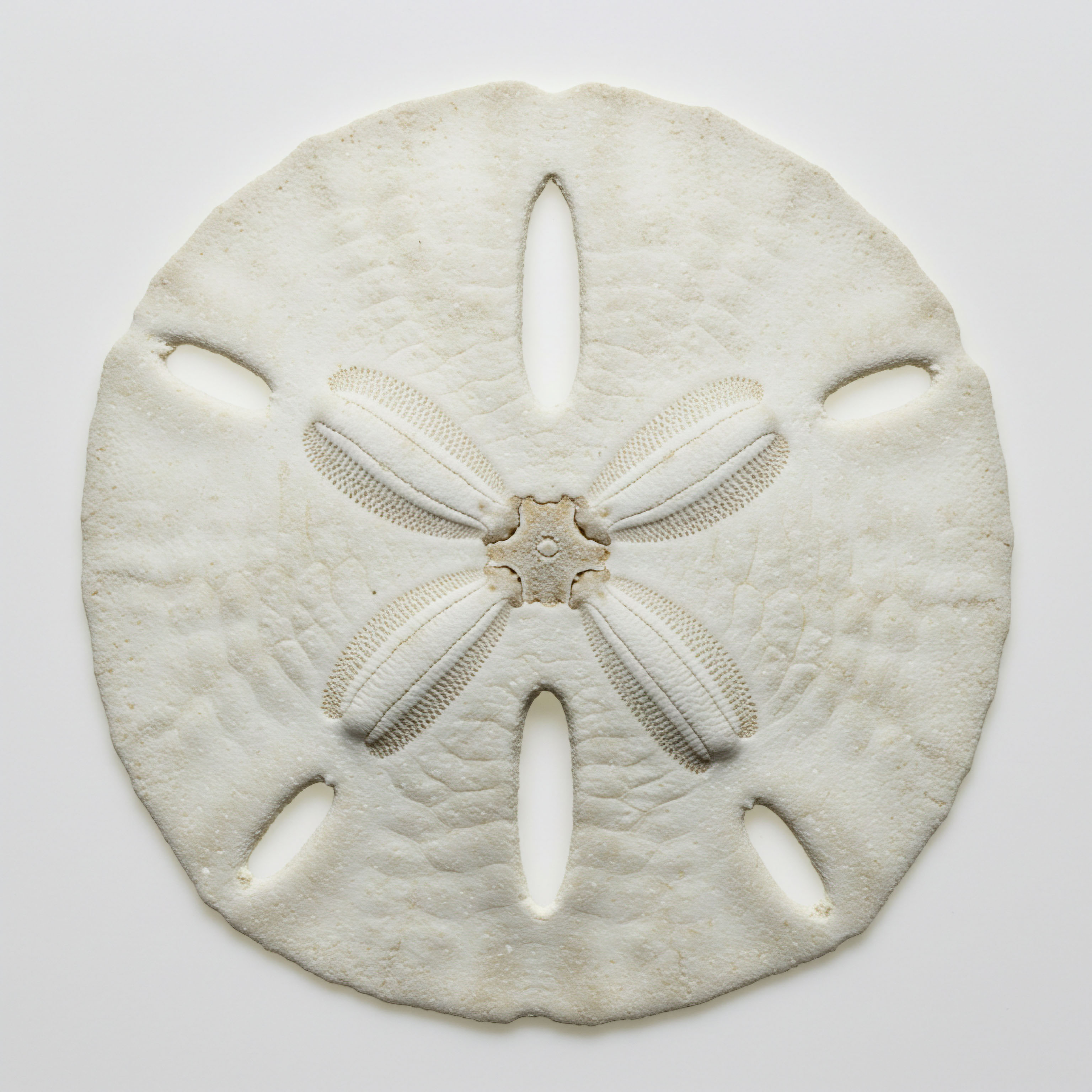

Fundamentals
You have likely experienced those subtle shifts in your well-being, moments when vitality seems just beyond reach, or when your internal rhythm feels somewhat askew. Perhaps a persistent fatigue settles in, or a diminished sense of drive casts a shadow over your days.
These sensations, though often dismissed as inevitable aspects of aging or daily stress, frequently signal deeper physiological dialogues occurring within your body. Our exploration today focuses on one such profound dialogue ∞ the role of long-term female testosterone protocols and their intimate connection with cardiovascular health. This is not merely about addressing a symptom; it is about understanding the intricate biochemical recalibrations that support a robust, vibrant existence.
Testosterone, while frequently associated with male physiology, performs indispensable functions within the female body, influencing far more than just libido. It acts as a vital signaling molecule, contributing to bone density, muscle mass, cognitive acuity, and a pervasive sense of well-being.
A decline in optimal testosterone levels, often observed during perimenopause and postmenopause, can contribute to a constellation of symptoms that extend beyond the reproductive system, impacting metabolic function and cardiovascular resilience. Recognizing these internal messages is the first step toward re-establishing equilibrium.
Optimal testosterone levels in women support bone density, muscle mass, cognitive function, and overall vitality, impacting metabolic and cardiovascular health.
The endocrine system, a sophisticated network of glands and hormones, operates with the precision of a master conductor. Each hormone, including testosterone, plays a specific part in this biological orchestration, influencing various physiological processes. When testosterone levels become suboptimal, the body’s internal messaging service can experience disruptions, affecting tissues and systems that depend on its signals. Understanding these foundational roles sets the stage for comprehending how targeted endocrine system support can restore systemic harmony and contribute to long-term health.

Why Testosterone Matters for Female Cardiovascular Wellness?
Consider the cardiovascular system as the body’s essential transport network, constantly working to deliver oxygen and nutrients. Testosterone in women influences several factors directly impacting this network’s efficiency and health. It participates in maintaining vascular tone, the inherent tension within blood vessel walls that regulates blood pressure.
Additionally, it influences lipid metabolism, affecting the delicate balance of cholesterol and triglycerides circulating throughout the bloodstream. These actions collectively contribute to the structural integrity and functional capacity of the heart and blood vessels, thereby underscoring testosterone’s significance beyond its more commonly perceived roles.
- Vascular Tone ∞ Testosterone contributes to the healthy dilation and constriction of blood vessels, influencing blood flow and pressure.
- Lipid Metabolism ∞ It plays a part in regulating cholesterol and triglyceride levels, which are critical markers for cardiovascular health.
- Endothelial Function ∞ The hormone impacts the inner lining of blood vessels, supporting their ability to respond dynamically to physiological demands.


Intermediate
As we deepen our understanding, the practical application of hormonal optimization protocols for women with suboptimal testosterone levels becomes clearer. Clinical approaches typically involve the precise administration of exogenous testosterone to recalibrate systemic balance. These protocols are meticulously tailored, recognizing the delicate physiological thresholds within the female endocrine system. The goal extends beyond symptom alleviation, aiming for a sustained restoration of physiological function, particularly concerning cardiovascular health markers.
Female testosterone replacement therapy (TRT) protocols are distinct from those designed for men, emphasizing lower dosages and careful monitoring to avoid supraphysiological levels. A common approach involves subcutaneous injections of Testosterone Cypionate, typically in small, precise doses ranging from 0.1 to 0.2 ml weekly. This method allows for steady, controlled delivery, mitigating fluctuations and supporting consistent physiological signaling.
Progesterone may be co-administered, especially for peri-menopausal and post-menopausal women, to ensure comprehensive hormonal balance and protect endometrial health. Pellet therapy, offering a longer-acting delivery mechanism, presents another option, with Anastrozole sometimes included to modulate estrogen conversion when clinically indicated.
Female testosterone protocols prioritize precise, low-dose administration, often through subcutaneous injections or pellets, to restore hormonal balance and support systemic health.

How Do Specific Protocols Influence Cardiovascular Markers?
The influence of long-term female testosterone protocols on cardiovascular health manifests through several interconnected pathways. These interventions can modulate systemic inflammation, a recognized contributor to atherosclerotic progression. They also play a part in optimizing glucose metabolism, thereby reducing insulin resistance, which itself poses a significant cardiovascular risk. The consistent recalibration of androgen levels within a physiological range aims to foster an environment conducive to vascular health and myocardial integrity.
Consider the analogy of a complex biological feedback system as a finely tuned thermostat. When the internal temperature (hormone levels) deviates from its optimal setting, the system initiates corrective actions. In this context, testosterone protocols act as a precise adjustment, guiding the body back to its ideal operating range. This recalibration affects the entire metabolic machinery, influencing how the body processes fats and sugars, and how efficiently blood vessels function.

Examining Dosage and Delivery Methods
The choice of delivery method for female testosterone protocols is paramount for achieving consistent physiological levels and minimizing potential side effects. Subcutaneous injections offer a flexible approach, allowing for frequent, small adjustments based on clinical response and laboratory assessments.
Pellet therapy, by contrast, provides a sustained release over several months, which can be advantageous for adherence and convenience, though it requires a more significant initial commitment. Each method, when appropriately monitored, contributes to a stable endocrine environment that supports overall well-being, including cardiovascular function.
| Protocol Aspect | Clinical Implication | Cardiovascular Relevance |
|---|---|---|
| Dosage Precision | Avoids supraphysiological levels, reducing adverse effects. | Maintains favorable lipid profiles and vascular integrity. |
| Delivery Method | Ensures steady hormone release, preventing fluctuations. | Supports consistent endothelial function and blood pressure regulation. |
| Co-administration of Progesterone | Balances estrogenic effects, protecting uterine lining. | Contributes to overall hormonal milieu impacting vascular health. |


Academic
The academic scrutiny of long-term female testosterone protocols necessitates a deep exploration into the molecular and cellular underpinnings of cardiovascular physiology. The interplay between androgens and the cardiovascular system in women extends beyond macroscopic observations, delving into receptor-mediated actions and genomic signaling pathways. Understanding these intricate mechanisms provides a robust framework for appreciating the therapeutic potential of targeted hormonal interventions in promoting cardiovascular resilience.
Androgen receptors (ARs) are expressed in various cardiovascular tissues, including vascular smooth muscle cells, endothelial cells, and cardiomyocytes. Testosterone’s binding to these receptors initiates a cascade of intracellular events that modulate gene expression and protein synthesis.
These genomic effects influence processes such as nitric oxide (NO) production, a critical vasodilator, and the activity of matrix metalloproteinases (MMPs), which are involved in vascular remodeling. Furthermore, non-genomic actions, occurring rapidly at the cell membrane, can acutely influence ion channel activity and intracellular calcium concentrations, thereby affecting vascular tone and myocardial contractility.
Testosterone influences cardiovascular health through both genomic and non-genomic actions, impacting nitric oxide production, vascular remodeling, and myocardial function.

What Are the Molecular Mechanisms of Androgen Action on Vascular Health?
The direct impact of testosterone on the vascular endothelium, the innermost lining of blood vessels, represents a crucial aspect of its cardiovascular influence. Optimal testosterone levels support endothelial function by enhancing the bioavailability of nitric oxide, a potent vasodilator and anti-atherogenic molecule. This leads to improved vascular compliance and reduced peripheral resistance.
Conversely, androgen deficiency can contribute to endothelial dysfunction, a precursor to atherosclerosis. Long-term, physiologically dosed testosterone protocols aim to restore this delicate balance, thereby attenuating processes that compromise vascular integrity.
Moreover, testosterone influences lipid metabolism by modulating hepatic lipase activity and affecting lipoprotein profiles. Research indicates that maintaining physiological testosterone levels in women can contribute to a more favorable lipid milieu, characterized by lower levels of low-density lipoprotein (LDL) cholesterol and triglycerides, and potentially higher levels of high-density lipoprotein (HDL) cholesterol. These shifts in lipid parameters are clinically significant, as they directly correlate with a reduced risk of atherosclerotic plaque formation and subsequent cardiovascular events.

Analyzing Cardiac Remodeling and Myocardial Function
Beyond vascular effects, testosterone exerts influence on myocardial tissue itself. Studies have investigated the presence of androgen receptors within cardiomyocytes, suggesting a direct role in cardiac contractility and remodeling. While the precise mechanisms are still under active investigation, evidence suggests that testosterone can modulate calcium handling within myocardial cells, impacting the force and efficiency of cardiac contractions.
Long-term protocols, when carefully managed, seek to support myocardial health, potentially mitigating age-related declines in cardiac function and contributing to sustained cardiovascular performance. The therapeutic objective extends to fostering a cardiac environment that resists adverse remodeling and maintains robust pump function throughout the lifespan.
- Nitric Oxide Synthesis ∞ Testosterone can upregulate endothelial nitric oxide synthase (eNOS), increasing NO production and promoting vasodilation.
- Inflammatory Cytokine Modulation ∞ Androgens can exert anti-inflammatory effects, reducing systemic markers like C-reactive protein (CRP), which contributes to cardiovascular disease progression.
- Insulin Sensitivity ∞ Testosterone influences insulin signaling pathways, improving glucose uptake and reducing insulin resistance, a significant cardiovascular risk factor.
- Arterial Stiffness ∞ Through its effects on vascular smooth muscle and extracellular matrix components, testosterone can help maintain arterial elasticity, preventing age-related stiffening.
| Biomarker | Testosterone Effect (Physiological Dosing) | Clinical Relevance |
|---|---|---|
| LDL Cholesterol | Decreased | Reduced risk of atherosclerotic plaque formation. |
| HDL Cholesterol | Maintained or modestly increased | Supports reverse cholesterol transport and vascular protection. |
| Triglycerides | Decreased | Lowered risk of dyslipidemia-related cardiovascular events. |
| C-Reactive Protein (CRP) | Decreased | Indicates reduced systemic inflammation and cardiovascular risk. |
| Endothelial Function Markers | Improved | Enhanced vascular health and reduced risk of endothelial dysfunction. |

References
- Davis, Susan R. et al. “Testosterone for women ∞ the clinical practice guideline of The Endocrine Society.” Journal of Clinical Endocrinology & Metabolism, vol. 101, no. 12, 2016, pp. 4539-4557.
- Traish, Abdulmaged M. et al. “Testosterone and the cardiovascular system ∞ an update.” Reviews in Endocrine and Metabolic Disorders, vol. 15, no. 2, 2014, pp. 109-123.
- Davison, Sharon L. et al. “Androgen levels in women with and without coronary artery disease.” Clinical Endocrinology, vol. 63, no. 1, 2005, pp. 1-6.
- Miller, K. K. et al. “Effects of testosterone replacement in women with hypopituitarism ∞ a randomized, double-blind, placebo-controlled study.” Journal of Clinical Endocrinology & Metabolism, vol. 88, no. 2, 2003, pp. 601-607.
- Rosano, Giuseppe M. C. et al. “Androgens and the cardiovascular system in women.” Journal of Clinical Endocrinology & Metabolism, vol. 87, no. 5, 2002, pp. 2000-2006.
- Shifren, Janie L. et al. “Transdermal testosterone treatment in women with impaired sexual function after oophorectomy.” New England Journal of Medicine, vol. 343, no. 10, 2000, pp. 682-688.
- Jones, H. W. & Wentz, A. C. Novak’s Textbook of Gynecology. 12th ed. Williams & Wilkins, 1996.

Reflection
The journey to understanding your biological systems and reclaiming vitality is deeply personal and inherently empowering. This exploration of long-term female testosterone protocols and their cardiovascular implications offers a glimpse into the sophisticated mechanisms governing your well-being. Consider this knowledge a foundational step, a compass guiding you toward a more informed partnership with your own physiology.
The nuanced dialogue between hormones and organ systems continually shapes your health trajectory. Your path to optimal function demands an individualized strategy, one that acknowledges your unique biochemical landscape and lived experiences. This understanding allows you to approach your health with informed agency, moving toward a future where vitality and function are not merely aspirations, but lived realities.



